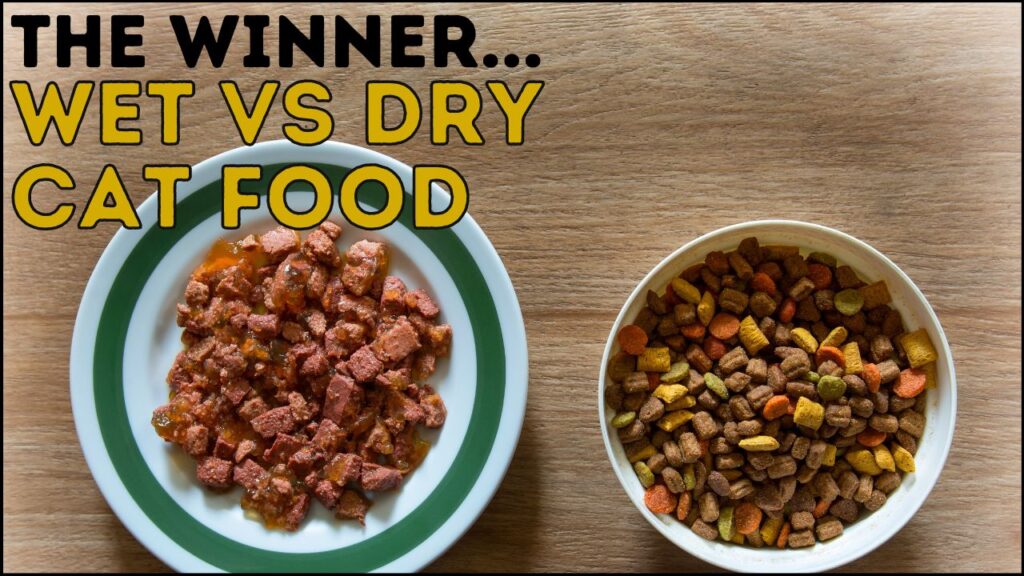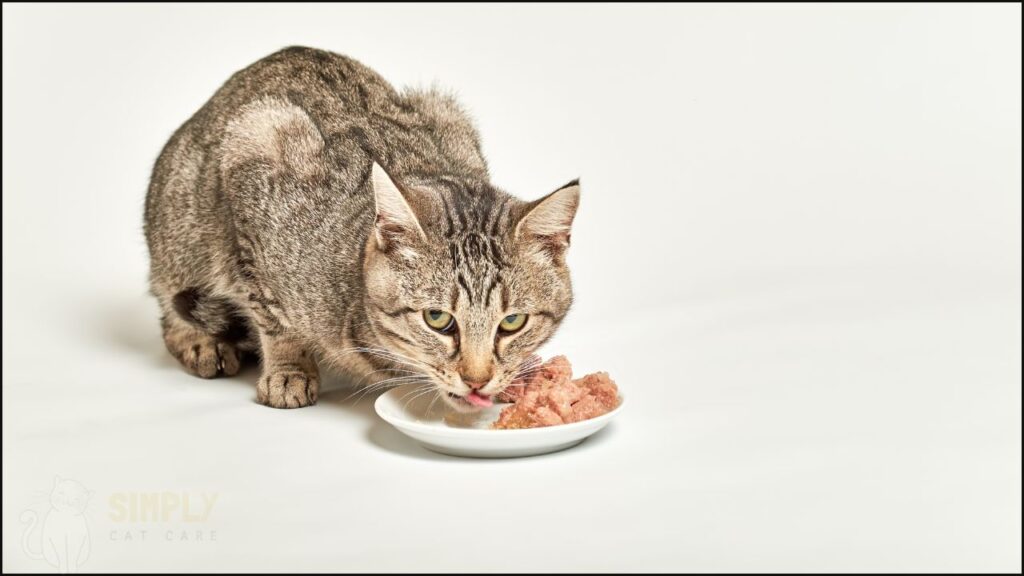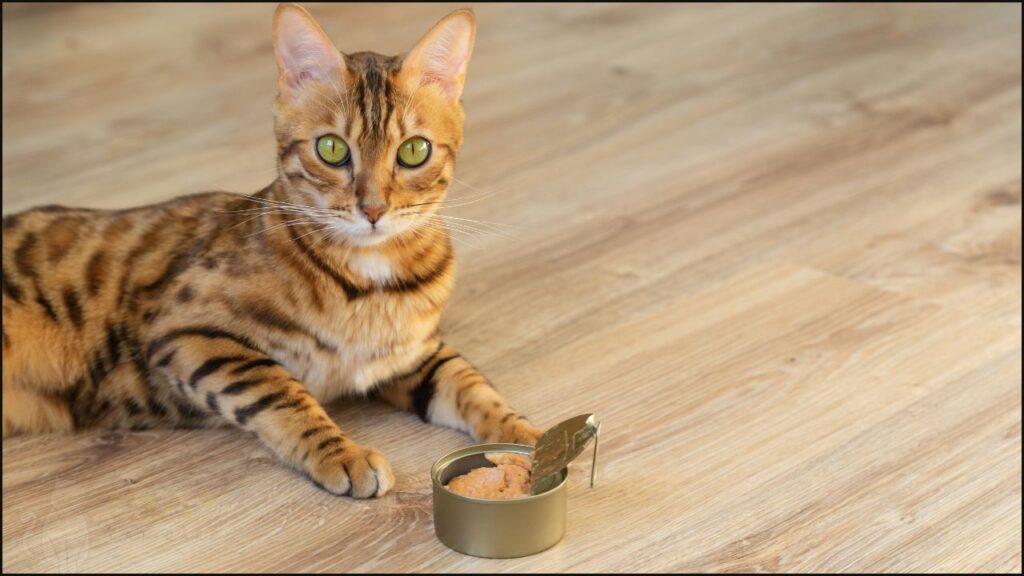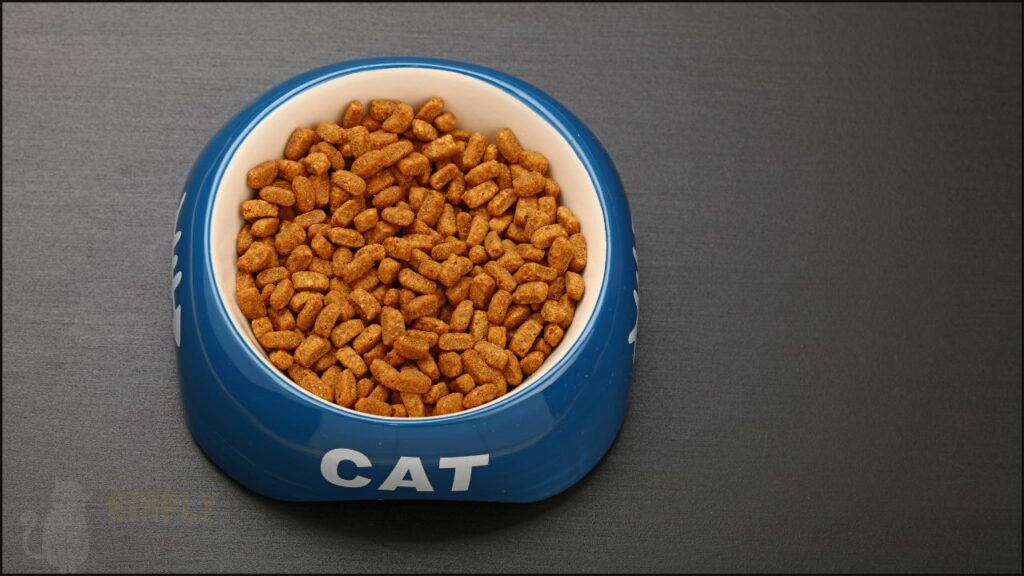Wet vs dry cat food – what is best?
Wet cat food.
I researched over 50 popular cat foods.
The average wet cat food has 10% carbs, compared to 20% in dry.
Cats are carnivores. High carb diets aren’t ideal for long term health.
A cat also lacks thirst drive. They won’t drink enough water when fed all dry cat food.
In the rest of this article, find out more about wet vs dry cat food. I’ll look at the pros and cons of each and answer frequently asked questions.
I recommend seeking the advice of a vet for any further questions. The advice in this article is not intended as medical advice.

Wet Vs Dry Cat Food
Wet is best.
It’s lower in carbohydrate, and higher in water. Both of these benefit your cats health.
It also tends to contain more animal based protein, as opposed to grains.
But, like many things, it’s not black and white.
So let’s look at this further…
Nutritional Differences Between Wet and Dry Cat Food
Here’s a comparison (dry matter basis):
| Nutrition | Wet cat food | Dry cat food |
|---|---|---|
| Protein | 50% | 46% |
| Fat | 23% | 22% |
| Carb | 10% | 20% |
| Fiber | 5% | 3% |
| Ash | 11% | 9% |
| Taurine | 1% | 0.5% |
| Water | 80% | 10% |
| Kcal/kg | 1,012 | 4.088 |
The main differences:
Protein
Wet cat food offers a tad more protein.
To go deeper, a compared protein quality. Quality is a factor of digestibility and essential amino acid content.
The average quality of wet cat food is 95% and dry is 85%.
Dry cat food tends to use more low quality protein, like wheat gluten. Not very digestible and low in essential amino acids.
So the adjusted protein of wet cat food is 47% and 39% for dry. Both exceed AAFCO’s guideline for 26% and 30% for maintenance and growth.
Winner: Wet cat food
Fat
Comparable between wet and dry cat food.
Fat is used for energy and helps with taste.
A small amount of essential fats are needed for health. Cats only use essential fats from animal sources.
Winner: Tie
Carbs
Dry cat food has double the amount compared to wet on average.
Researchers suggest cats tolerate 20g of carbs per day (~12% dry matter basis). Too much can spike blood sugar.
The jury is still out on ‘how much is bad’.
Given cats don’t need carbs, I recommend sticking to cat food around or under this tolerance level.
Winner: Wet cat food
Water
Wet cat food is much higher in moisture.
Cats have low thirst drive as desert animals. They won’t drink enough water with a dry food diet.
Easy choice.
Winner: Wet cat food
Caloric Density
Wet cat food is 4x less calorically dense than dry cat food.
The reality is it’s easy to overfeed dry food, particularly when free fed. It’s harder to do so with wet cat food.
Winner: Wet cat food
When it comes to nutrition, wet cat food is best.
Whilst some dry cat food brands are better than average (e.g. Dr. Elsey’s, Ziwi Peak Air-Dried cat food, Tiki Cat Born Carnivore) I consider wet as a first choice.
Some things to note:
This includes popular brands like Hill’s, Wellness Core, Sheba, Fancy Feast, Blue Buffalo.
Whilst it’s not a reflection of all cat foods, this is a reasonable expectation if you pick a cat food off the shelf.

Pros and Cons of Wet Cat Food
Here’s a comparison of the pros and cons of wet cat food:
| Pros | Cons |
|---|---|
| High protein | High cost |
| High moisture | Inconvenient |
| Portion and calorie control | Spoils faster |
The average wet cat food costs $0.49 per ounce. That’s higher than dry cat food, at about $0.25 per ounce.
Of course this changes over time, and depends on the brand.
The most affordable wet cat foods are:
- Friskies
- Dave’s Naturally
- 9Lives
We’ve covered the nutrition benefits of wet cat food. It’s great in that department.
Logistics are also poor with wet cat food. If your cat doesn’t eat all the food, you’ll have to pop in the fridge.
And opening tins all the time gets a little annoying.

Pros and Cons of Dry Cat Food
Here’s a comparison of the pros and cons of dry cat food:
| Pros | Cons |
|---|---|
| Affordable | High carb |
| Convenient | High calorie |
| More choices | Lower quality protein |
Dry cat food is cheaper and more convenient.
You can use this to top up your cats calorie needs. Hard to do with wet cat food.
It’s also easy to pour, with no annoying tin opening shenanigans.
Finally, it’s easy to leave out a portion and let your cat nibble at their own discretion. That’s better if your cat likes to graze and you are running around doing errands.
But it’s lower quality nutrition holds most dry cat foods back. Wet is better, and worth the small inconvenience.

Choosing the Right Type of Food for Your Cat
Most cats benefit from wet cat food.
In fact, all do.
Senior cats need high protein intakes to compensate for age-related muscle loss. Wet food, with it’s more robust protein, is best for seniors.
Kittens with rapid growth needs, also benefit from wet.
Middle aged cats tend to gain weight from a decline in metabolic rate. Wet cat food, which is less calorie dense, is best for middle aged cats.
I guess I’m trying to say. Wet is best.
Dry cat food is a convenient choice for topping up. That’s it’s strength.
Frequently Asked Questions
Is It Ok to Only Feed a Cat Wet Food?
Yes.
Look for the statement of nutritional adequacy on the label. Choose cat food that is complete and balanced.
Learn More:
What Are the Disadvantages of Wet Cat Food?
Cost and inconvenience.
Opening a tin? A little annoying.
Pouring a bag? Less so.
The average wet cat food costs more than dry cat food.
Should Cats Always Have Dry Food Available?
No.
Free-feeding increases the risk of obesity. It’s not good for your cats health.
Learn More:
Do Cats Need Wet Food Twice a Day?
Preferably.
It’s best to feed your cats small frequent meals.
Learn More:
Conclusion
Wet cat food is best.
It has high protein and moisture, with fewer carbs. On the other hand, dry cat food is cheaper and more convenient.
For your cats health, wet comes out on top. But you can use both in different situations.
Learn More:
